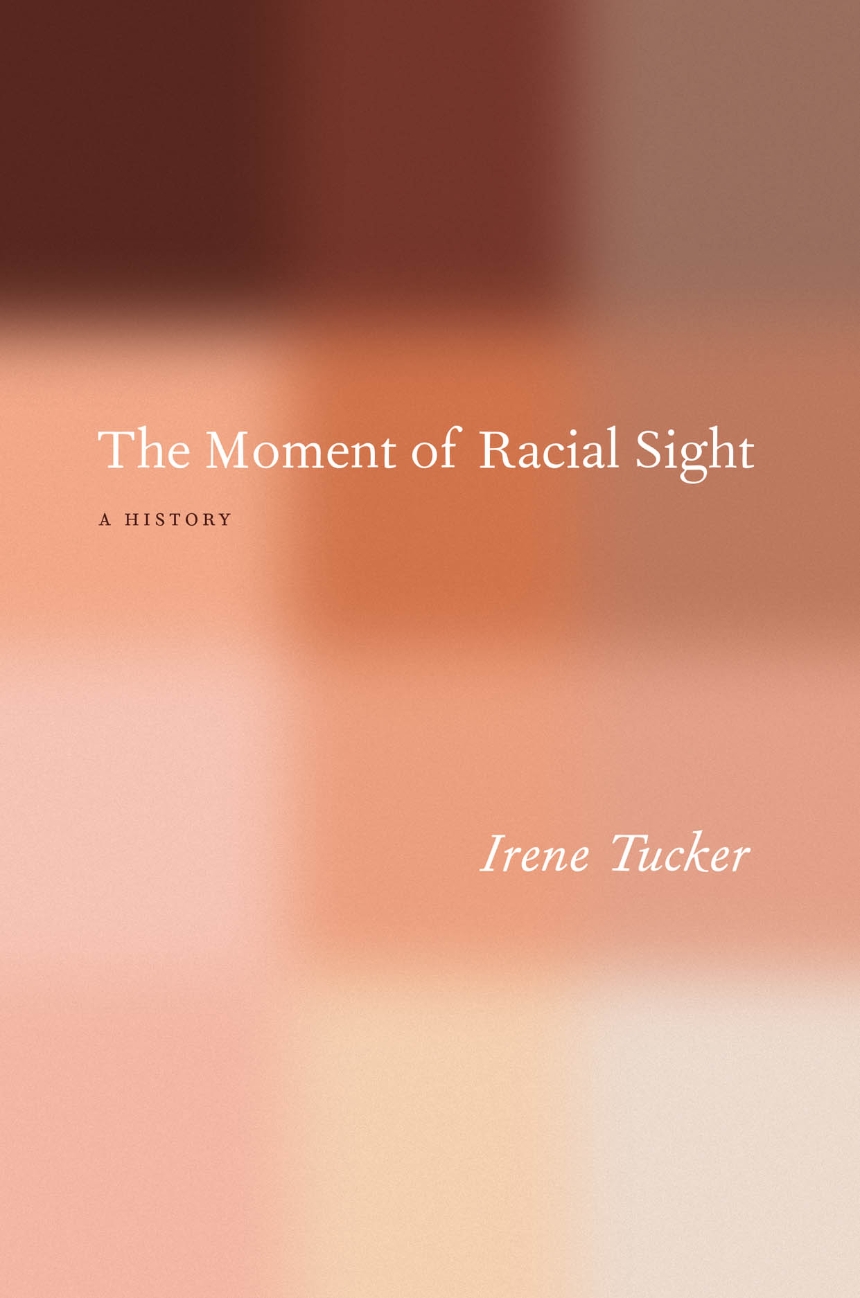The Moment of Racial Sight
A History
The Moment of Racial Sight overturns the most familiar form of racial analysis in contemporary culture: the idea that race is constructed, that it operates by attaching visible marks of difference to arbitrary meanings and associations. Searching for the history of the constructed racial sign, Irene Tucker argues that if people instantly perceive racial differences despite knowing better, then the underlying function of race is to produce this immediate knowledge. Racial perception, then, is not just a mark of acculturation, but a part of how people know one another.
Tucker begins her investigation in the Enlightenment, at the moment when skin first came to be used as the primary mark of racial difference. Through Kant and his writing on the relation of philosophy and medicine, she describes how racialized skin was created as a mechanism to enable us to perceive the likeness of individuals in a moment. From there, Tucker tells the story of instantaneous racial seeing across centuries—from the fictive bodies described but not seen in Wilkie Collins’s realism to the medium of common public opinion in John Stuart Mill, from the invention of the notion of a constructed racial sign in Darwin’s late work to the institutionalizing of racial sight on display in the HBO series The Wire. Rich with perceptive readings of unexpected texts, this ambitious book is an important intervention in the study of race.
Reviews
Table of Contents
Acknowledgments
Introduction
ONE / Kant’s Dermatology; or, The Racialization of Skin
Kant’s Time
Beyond Humors: Distinguishing Race and Medicine
Kant: Skin Deep
Institutions of the Body
Autopsy’s Gerontological Critique
Beyond the Humors: Kant’s Race
The Instant of the Skin
TWO / Paranoid Imagining: Wilkie Collins, the Rugeley Poisoner, and the Invisibility of Novelistic Ekphrasis
Qualifications of Character
Aristotle’s Fictive Community
Seeing Is Imagining
The Trial of the Poisoning Physician
The Disappearance of the Author
THREE / Picturing Utilitarianism: John Stuart Mill and the Invention of a Photographic Public
Reproducing the Photographic Moment
Agreements without End: On Liberty and “What Is Poetry?”
Overhearing The Subjection of Women
FOUR / Observing Selection: Charles Darwin and the Emergence of the Racial Sign
Malthus’s Disappearing Perspective
Selecting a Point of View: Darwin’s Origins
The Point of View from Nowhere: Darwin and His Predecessors
Figuring Legibility: Darwin’s Expression, Descent, and the Solution of Race
FIVE / Structures of an Instant: The Wire and the Institution of Race
Racing Space and the Logic of “Real Estate”
Examination 1: Opacity for Sale; Stringer Bell’s Real Estate
Examination 2: The Semiotics of the Paper Bag
Examination 3: Vacant Real Estate
Examination 4: Jimmy McNulty’s Suspended Bodies
Notes
Index
Introduction
ONE / Kant’s Dermatology; or, The Racialization of Skin
Kant’s Time
Beyond Humors: Distinguishing Race and Medicine
Kant: Skin Deep
Institutions of the Body
Autopsy’s Gerontological Critique
Beyond the Humors: Kant’s Race
The Instant of the Skin
TWO / Paranoid Imagining: Wilkie Collins, the Rugeley Poisoner, and the Invisibility of Novelistic Ekphrasis
Qualifications of Character
Aristotle’s Fictive Community
Seeing Is Imagining
The Trial of the Poisoning Physician
The Disappearance of the Author
THREE / Picturing Utilitarianism: John Stuart Mill and the Invention of a Photographic Public
Reproducing the Photographic Moment
Agreements without End: On Liberty and “What Is Poetry?”
Overhearing The Subjection of Women
FOUR / Observing Selection: Charles Darwin and the Emergence of the Racial Sign
Malthus’s Disappearing Perspective
Selecting a Point of View: Darwin’s Origins
The Point of View from Nowhere: Darwin and His Predecessors
Figuring Legibility: Darwin’s Expression, Descent, and the Solution of Race
FIVE / Structures of an Instant: The Wire and the Institution of Race
Racing Space and the Logic of “Real Estate”
Examination 1: Opacity for Sale; Stringer Bell’s Real Estate
Examination 2: The Semiotics of the Paper Bag
Examination 3: Vacant Real Estate
Examination 4: Jimmy McNulty’s Suspended Bodies
Notes
Index
